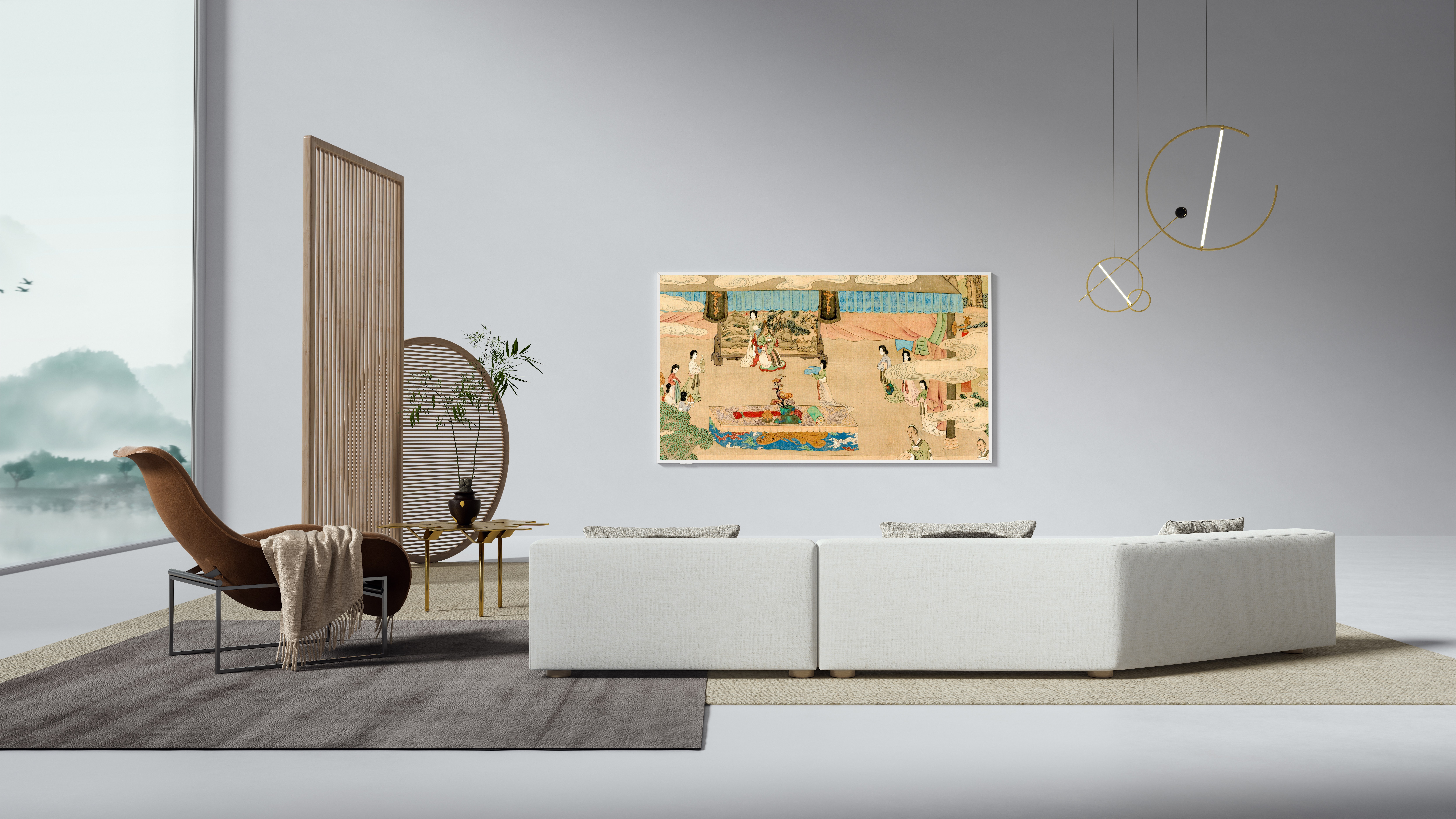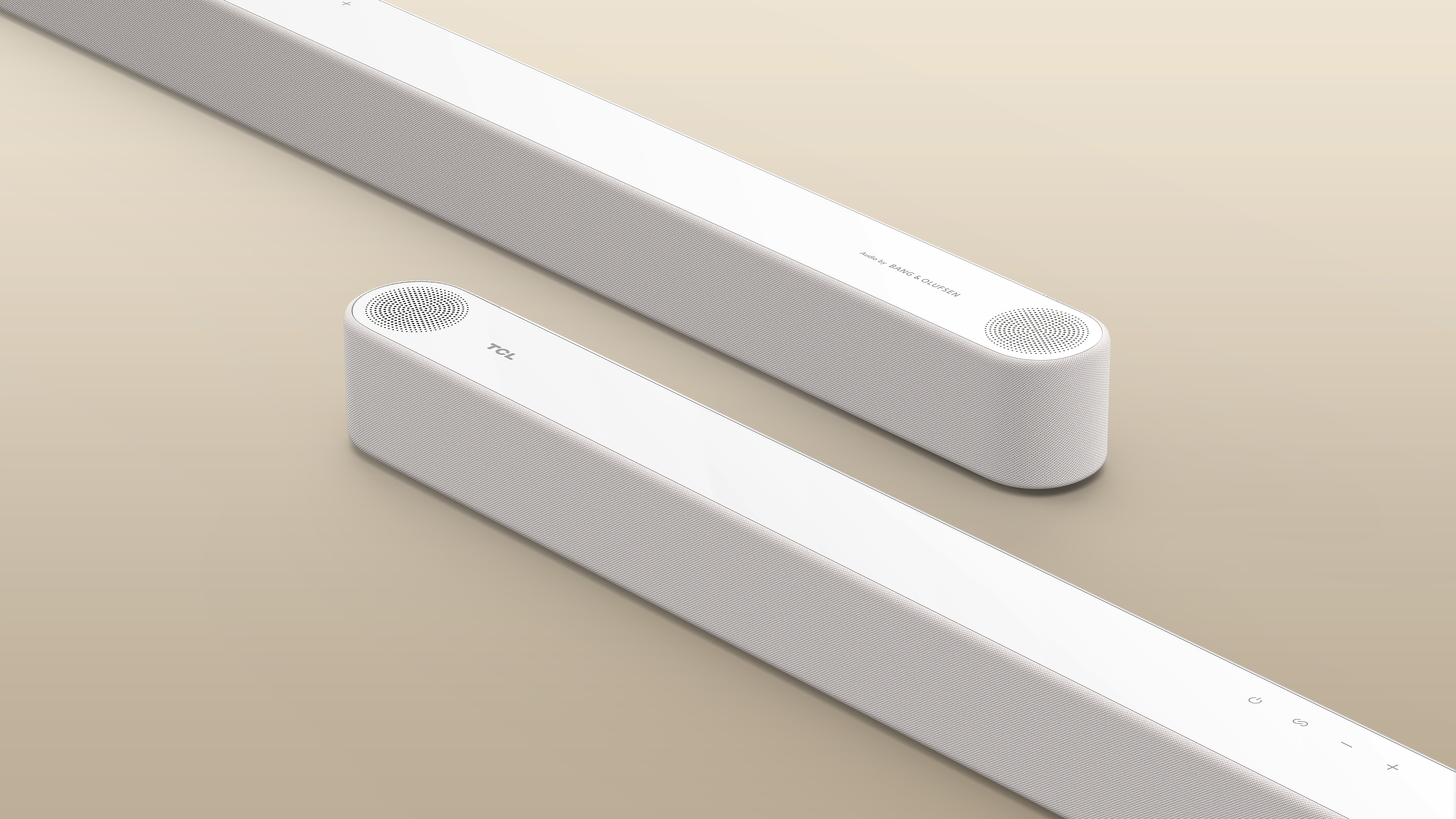
TCL's Nxtframe TV, rival to Samsung’s The Frame ‘Art TV’, has officially launched in the US, with pricing confirmed across all sizes and some available to order right now.
The Nxtframe is available in sizes 55- to 85-inch and its pricing is as follows: the 55-inch is priced at $1,499.99, 65-inch is priced at $1,999.99, 75-inch is priced at $2,499.99 and the 85-inch is priced at $3,999.99. Both the 55 and 65-inch models are available now (August 6th) with the larger 75 and 85-inch models set to arrive in September.
The feature highlights of the TCL Nxtframe include 4K Dolby Vision IQ and HDR10+ HDR support, 120Hz and 144Hz gaming with variable refresh rates, a thin 1.1-inch depth, Google TV smart TV platform, and, of course, its art library and ‘AI Art’ capabilities.
Also announced is the step-up TCL Nxtframe Pro, which has nearly the same specs as the Nxtframe but comes with a Bang & Olufsen soundbar and wireless subwoofer for improved audio.
Pricing for the Nxtframe Pro is as follows: the 55-inch will cost $1,999.99, the 65-inch will cost $2,699.99, the 75-inch will cost $3,499.99, and the 85-inch will cost $4,999.99. The Nxtframe Pro’s entire size range is also set to arrive in September.
The Nxtframe comes with a slim-fit wall-mount in the box, but there are alternative display options available, like a moveable floor stand on wheels and feet set, which also arrive in September. The moveable stand and feet are priced at $699.99 and $149.99 respectively.
Looking at the Nxtframe’s pricing, it is identical to that of its rival, Samsung’s The Frame TV. But, looking at it on paper, the TCL Nxtframe has a few ways in which it bests the Frame – and one key area where it doesn’t.

1. Dolby Vision
Samsung ranks among the makers of some of the best TVs in the world, such as the incredible Samsung S95D QD-OLED TV. However, one area it's always fallen short in is its lack of Dolby Vision support, opting to support HDR10+ instead. Unsurprisingly, the Samsung Frame is no different, with no Dolby Vision support included.
The TCL Nxtframe, however, supports both Dolby Vision (in its IQ format) and HDR10+, meaning it’s a more versatile option for both movies and gaming. Dolby Vision is a popular HDR format that adds richer color and better tone mapping of HDR to the particular brightness level of a TV, so having it as an option is only a benefit for the Nxtframe.

2. More gaming features
Although both the Samsung Frame and TCL Nxtframe feature 4K 120Hz, VRR (both with the AMD FreeSync Premium format as well), and ALLM, the Nxtframe also supports up to 144Hz VRR refresh rate, which is useful for PC gamers and is becoming increasingly common among the best gaming TVs.
The Nxtframe also features what it calls ‘Game Accelerator 240’, claiming up to 240Hz VRR refresh rate compatibility, which would put it up there with the best gaming monitors (although how effective it is remains to be seen).
3. A better backlight
Both the Samsung Frame and TCL Nxtframe use a QLED panel, which is brighter than a standard LED panel and better suited to brighter living environments. However, it doesn’t quite hit the overall contrast of OLED or mini-LED, so good backlighting is crucial for these two TVs.
The Samsung Frame uses an edge-lit panel, meaning its LEDs are placed around the perimeter of the TV, while the TCL Nxtframe features direct-lit LEDs immediately behind its panel. As I discovered when testing two large cheap TVs, edge-lit (certainly on large screens) is best avoided as it results in poor black uniformity (the ability to display dark tones effectively across the screen), leading to faded contrast and washed-out dark tones.
While direct-lit is still not the most effective backlight tech, it is an improvement. Placing the LEDs behind the screen directly allows for tighter backlight control, better contrast, and better black uniformity. This means the Nxtframe should have a more balanced picture than Samsung's The Frame.
4. Audio quality

While the Nxtframe’s 2.0ch, 20W speaker array is unlikely to beat The Frame’s 2.0.2 40W speaker array, the Nxtframe Pro’s included B&O soundbar and subwoofer will almost certainly provide a significant step-up in audio quality.
Although the Nxtframe Pro costs roughly $500 more than the standard Nxtframe and Samsung Frame, this is roughly what you’d expect to spend on one of the best soundbars, especially a mid-range option such as the Samsung HW-Q800C, Bose Smart Soundbar 600, and Sonos Beam – with a slicker design than a separate soundbar offers.
The Nxtframe Pro’s included soundbar and subwoofer (which replace the TV speakers altogether) are engineered in conjunction with Bang & Olufsen, a world-renowned audio company responsible for making not only some of the best Bluetooth speakers but also other high-end headphones, CD players, and more. Bang & Olufsen has also launched some superb standalone soundbars, such as the Beosound Theatre.
But it doesn’t have the slick connection box
Although it looks like the Nxtframe will give The Frame a run for its money, Samsung has one big advantage – its TVs have an external connection box. TCL touts that built-in to its ultra-thin 1.1-inch depth design is a chassis for connections “for simple installation without requiring an external box.”
However, one of the positives of the Samsung Frame is the One Connect Box, where all your connections go into a box that can be hidden away, and a single cable carries video and power to the screen. This means that loose, hanging cables aren’t an issue, resulting in a neater look and getting the desired ‘picture frame’ effect.
Opting for a more conventional connection system while also highlighting it as a positive seems unconvincing from the TCL, as this will surely mean external cables are on display or will need a more elaborate system to hide them – this could mean the picture frame look is lost.







